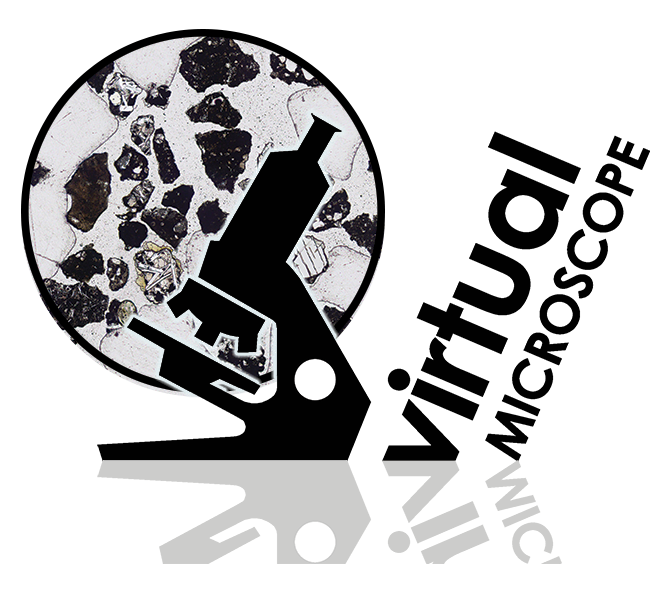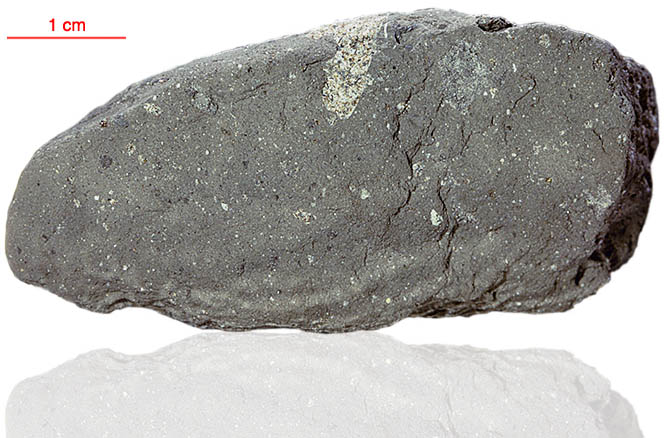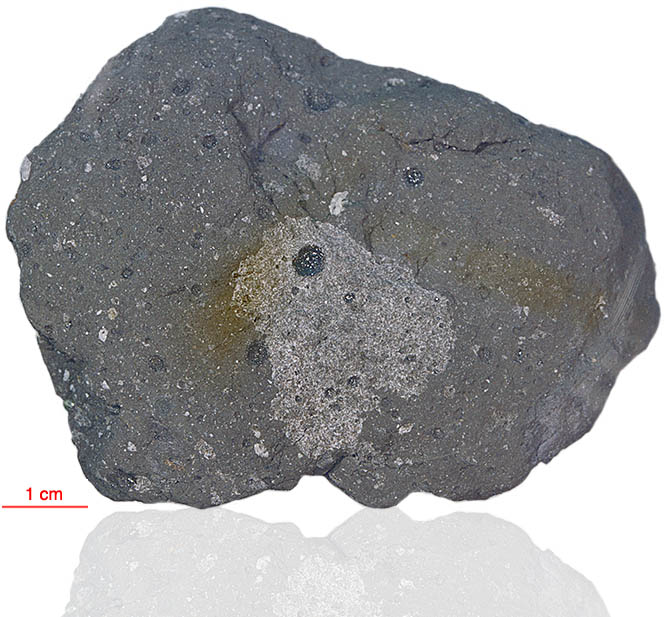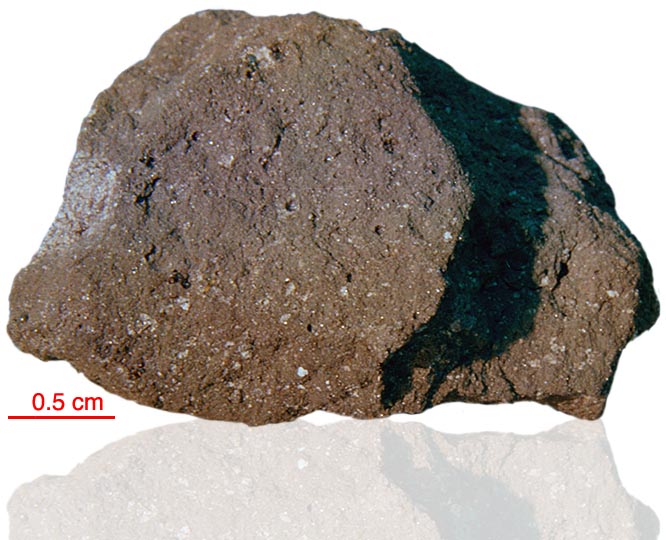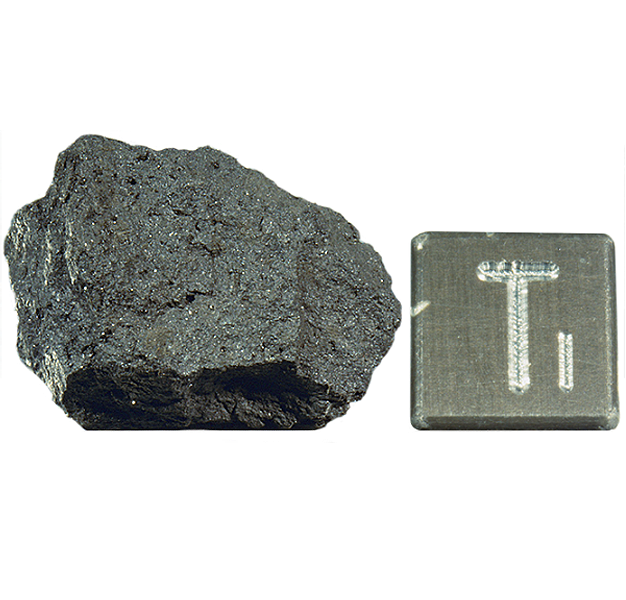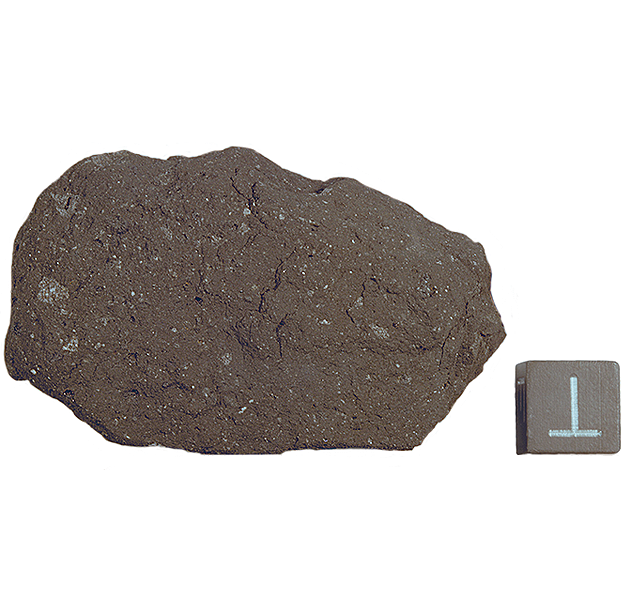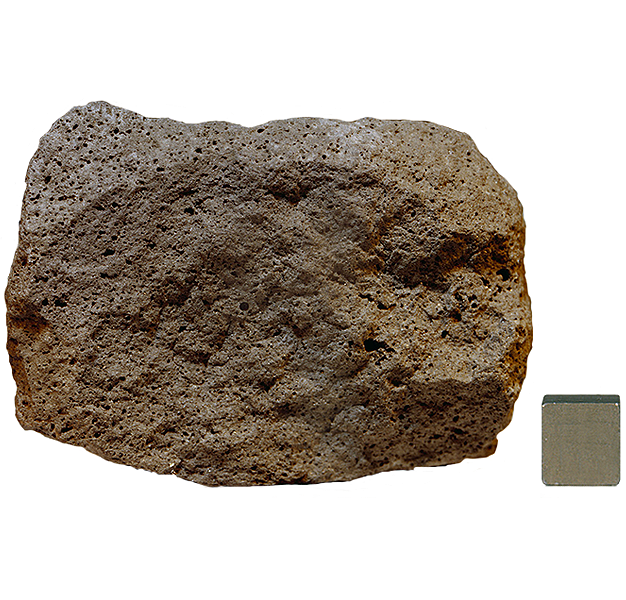
Fact sheet
10057 is a fine-grained vesicular ilmenite basalt (weight 919 grams) that is 3.6 billion years old. It has a granular texture consisting of interlocking crystals of pyroxene, plagioclase feldspar and ilmenite. It is thought to be from one of two basalt flows sampled by the Apollo 11 astronauts and is characterised by its relatively high potassium content.
Modally, 10% of the sample is void (now seen as vesicles) - indicating that the basaltic magma originally had a high gas content. Cristobalite and a K-rich glass have been recorded filling interstitial spaces within the sample. Other minerals present in small amounts include: phosphate, troilite and iron metal. The larger pyroxene crystals have compositions that vary from pigeonite (low-Ca) cores to augite (high-Ca) rims.
Further details of this and other Apollo samples are here: http://curator.jsc.nasa.gov/lunar/
The Apollo 11 samples create an iconic collection since they were the first rocks collected by humankind that were returned to Earth from another solar system body. The Apollo 11 team collected and returned 22 kg of rock and soil samples.
Apollo 11 launched from Cape Kennedy on 16 July 1969. An estimated 530 million people watched Armstrong's televised image and heard his voice describe the event as he took "...one small step for a man, one giant leap for mankind" on 20 July 1969.

